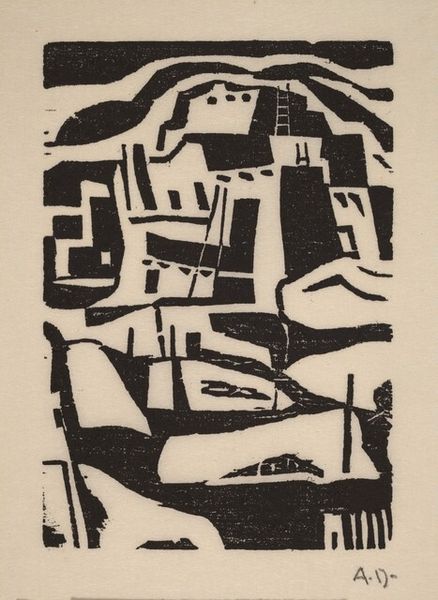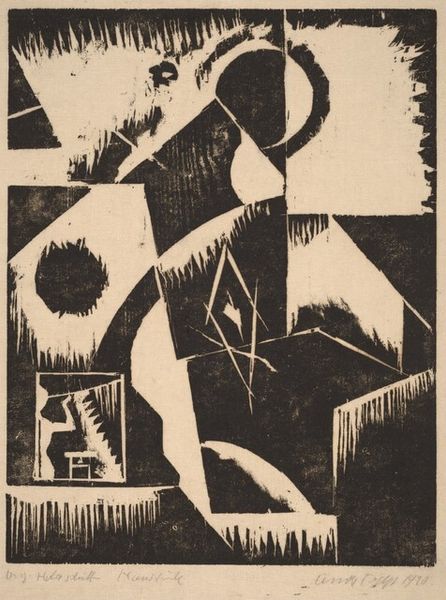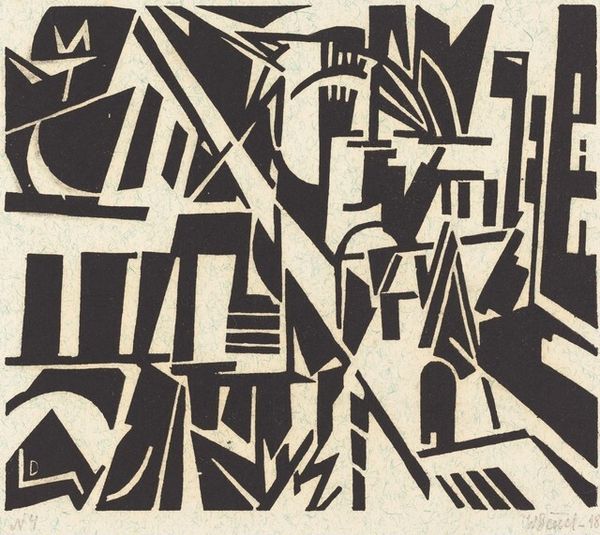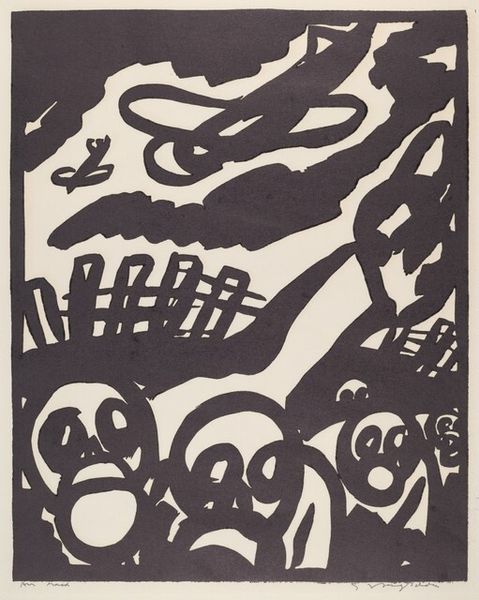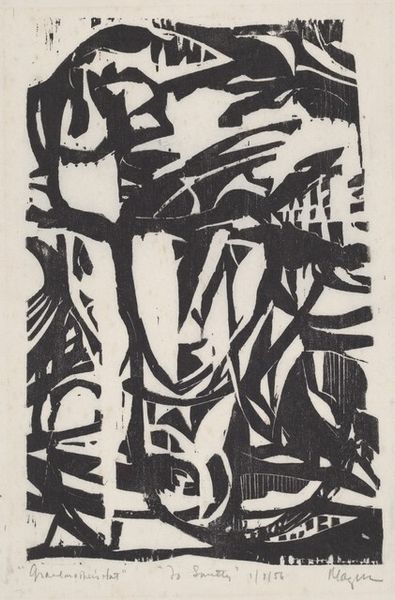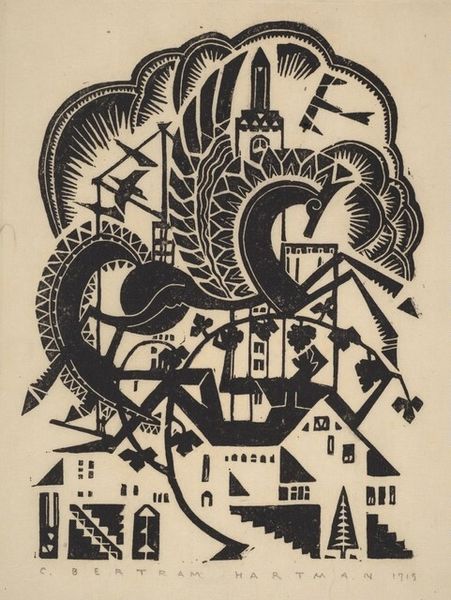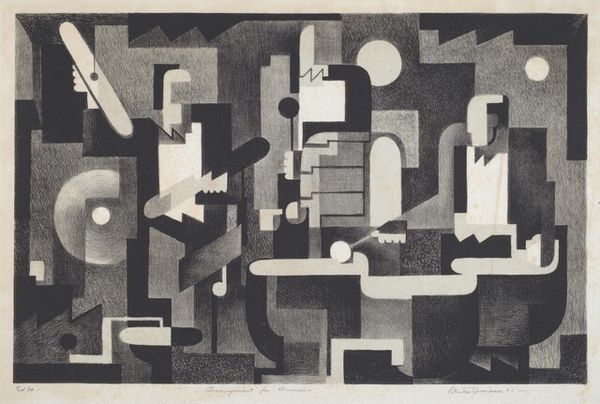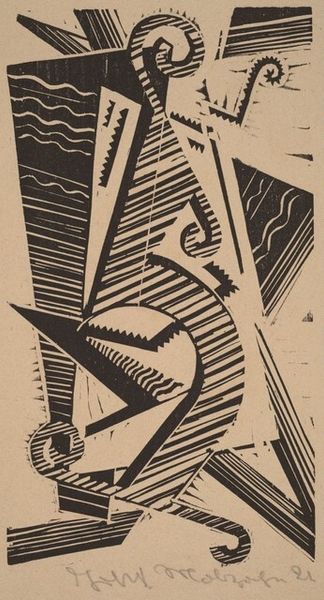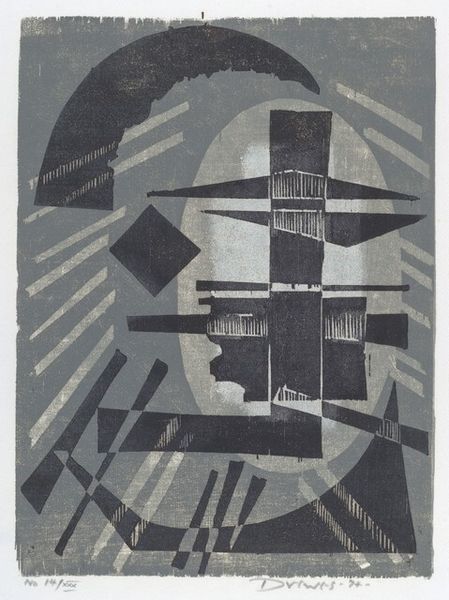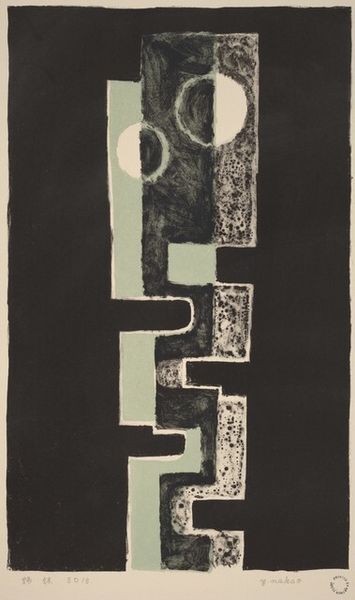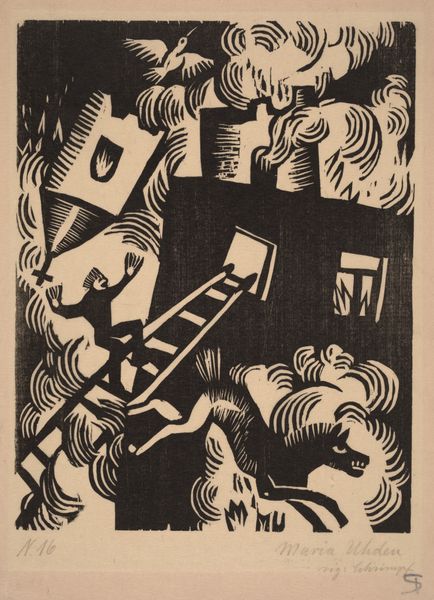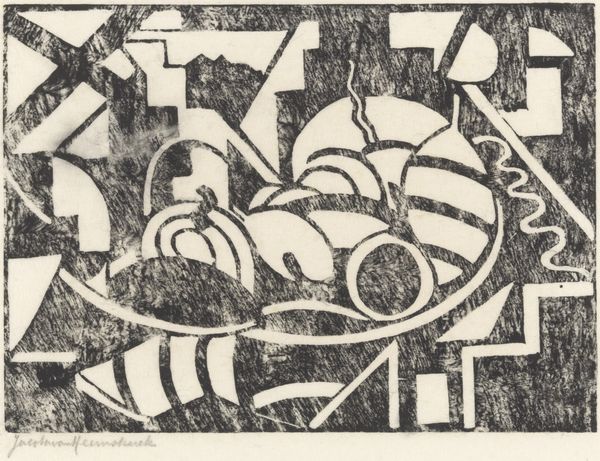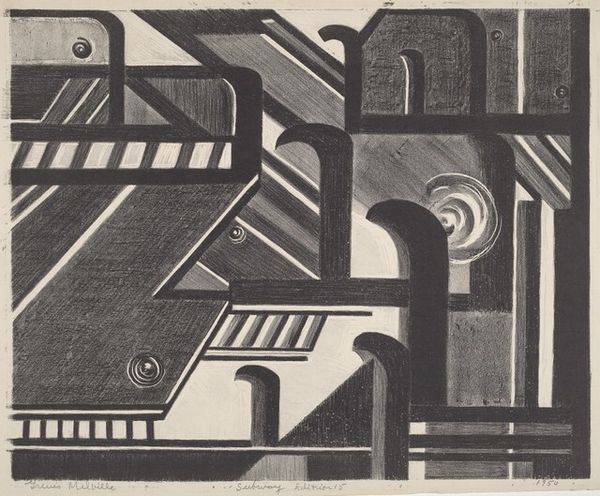
print, woodcut
# print
#
landscape
#
geometric
#
expressionism
#
woodcut
Copyright: National Gallery of Art: CC0 1.0
Curator: The piece before us is a woodcut print entitled "Landscape," created by Cesar Klein in 1918. It is a powerful example of Expressionist landscape art. What is your initial impression? Editor: Claustrophobia. Even though it’s called "Landscape," there is very little sky, almost a visual blockage. The geometric shapes create a sense of unease. I feel a palpable tension in the contrast between black and gray, and a forced perspective—everything feels stacked on top of itself. Curator: Indeed. The compression amplifies the emotional impact, reflecting the societal anxieties during World War I, when it was made. Look at the bridge, the precarious positioning of the seated figure; they are not serene, but full of restless expectation, almost vibrating within a complex design. Editor: It seems almost propagandistic but very cleverly done because it evokes something subconscious. Was Cesar Klein using geometry here as some coded means of political statement, a response to political tensions, even the shifting class structures? Curator: Quite possibly. The angular forms can be read as symbols of social upheaval, referencing an age defined by industry and war. Expressionist artists used geometric shapes to disrupt traditional landscapes and awaken emotions that mirrored broader social fractures. In many ways, he's commenting on societal divisions and unease felt through the environment, by depicting human disquietude and societal dissonance through harsh, graphic marks. Editor: What fascinates me most is how, even in a landscape—traditionally a space for calm—he reflects turmoil. Notice how, instead of open fields, we find structures fighting for dominance, and humanity perched precariously amid everything. It’s powerful how a landscape here can be such a clear signal of sociopolitical turmoil. Curator: Exactly. This image, deceptively simple in medium and execution, speaks volumes. The symbolism reminds us how environments are charged with our emotional and political realities. Editor: Well, it has given me plenty to consider! A truly fascinating piece reflecting not just a landscape but an anxious state of mind, a critical cultural document in print form. Curator: Indeed, "Landscape" makes us question not just the aesthetics but what landscapes represented and still represent in our society.
Comments
No comments
Be the first to comment and join the conversation on the ultimate creative platform.
